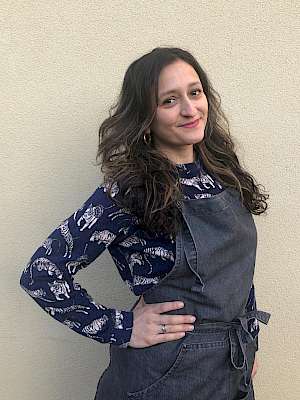How do people celebrate the festival?
Diwali is a festival of lights that signifies the victory of light over darkness and good over evil. This multi-faith festival is celebrated every autumn and holds great importance for Hindu, Sikh, Jans, Newar and Buddhist and reasons for celebrating are different for each religion.
Diwali typically lasts for five days, with each day having its own significance and rituals. The five days are marked by fireworks, family gatherings, the exchange of gifts, rituals, prayer and displays of vibrant colours. Compared to other Indian celebrations, Diwali is all about indulgence rather than fasting. One of the central aspects of Diwali is the preparation and consumption of a variety of delicious foods and sweets treats.
This year, the festival of lights falls on the 12th of November here in the UK and to celebrate, we visited our friends at the Hackney School of Food. Sareta Puri, plant-based cook and previous Eating Better blog contributor, shared her recipes and takes us through how to make two rich and flavourful dishes - aloo chaat and mango burfi.
“Chaat” means ‘to taste’ in Hindi and is a common name for a popular street food. It is typically made with aloo (potato) or chana (chickpea). It is served on or mixed into a refreshing kachumber salad and topped with zingy coriander chutney and sev (gram flour sticks as found in Bombay mix).
Mango burfi (or barfi) which are small square fudge-like sweets that are popular during Diwali. This plant-based version uses ground coconut for creaminess instead of cream or butter. The mango gives it colour, sweetness and - most importantly - flavour. It wouldn’t be a South Asian festival without burfi.




